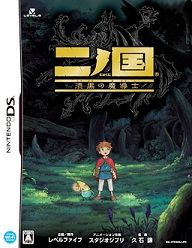« .hack developers show next RPG project: Solarobo | Main | RPG Deals 3/21 – 3/27 »
Valkyria Chronicles 2 hands-on preview
By Heath | March 21, 2010 at 12:37 pm
Sega’s Valkyria Chronicles for PlayStation 3 was the most innovative strategy RPG to come along in years, and in the opinion of this writer, also one of the best overall. Its sequel, Valkyria Chronicles 2 for PSP, is out in Japan and headed stateside later this year. Here is a hands-on preview describing some key differences, similarities, and how they’re all coming together.
Like before, battles are the heart and soul of the game, and the system from the original is in place again, implemented almost exactly the same way; players of the first game will immediately find themselves capable of formulating and executing a winning battle plan. One of the main differences is that the battlefields themselves are not as big or sprawling as they were in the original Valkyria Chronicles. Likely due to PSP limitations, battles now take place on several smaller maps instead. For example, a battle might feature area #1 and area #3 of the ones available. The player will deploy troops on both of these maps and meet goals (defeat all enemies, capture a certain base, etc.) in order to clear the mission.



Claiming certain bases will often give the player access to a base on another map occupied by the enemy, and this is where players will find one of the bigger changes to the battle system. If there is roster space available, the player can simply summon a solider to the aforementioend new base (even if there are enemies sitting in it), who will arrive immediately — not even waiting until next turn like they had to in the first VC. If the player’s roster is full, no problem; one can retire a player within the bounds of a base without spending a command point, then summon a soldier — even that same character that just retired — to the new base, again with no wait time. It doesn’t quite makes physical sense in terms of time and space, and it might even feel a bit like cheating. Nonetheless, it remains crucial to S-ranking some missions, so players will eventually have to make use of this nonsensical system. The battles are still plenty of fun though, and that’s what matters most.



The progression system remains largely the same as the previous game’s; after a successful mission, the player gets experience points and can spend them on level-ups for one specific class. As players may remember, choosing to upgrade the Stormtroopers meant a level increase for every soldier of that class, and the cost would vary depending on the class in question and what level was being reached. The same is still true in the sequel, though there are some noteworthy differences.



First, the previous game’s classes are now reorganized, as Snipers now fall under the same classification as the Scouts (when it comes to level buying). Furthermore, a few special abilities have been spread out among other classes, such as the mine-defusing technique of the support characters being reassigned to the new defender class. The biggest progression change, however, lies not in how the EXP is distributed, but in the character classes themselves, as each main class now has a few subdivisions:
-> Soliders who start with the base of a Scout can become higher-level Scouts, or branch off onto the Sniper path. From either of these first two initial branches, there are even more options that appear.
-> Stormtroopers can likewise become alternate types of solider, with each class having different statistical pros and cons.
-> Support members, who again handle the ammo restocking and tank repair, can quickly become either a statistically superior version of the class or take things on a musical route.
-> Defenders (the ones with the big shields, AKA “Armor class”) can change into improved versions of their starting class, or go on to become a dangerous close-quarters attacker wielding a sword.
-> Anti-tanks as well can improve in their current state or evolve into various types of grenade-launching death machines.
One does not change classes with use of experience points or story milestones — it’s done with items (which can be thought of as certifications or school “credits”). After each battle, every surviving member of the group who took an action (attacked an enemy, captured a flag, healed an ally, etc.) gets an item. More actions taken generally equals more items from the grab bag, with the top two soliders (not chosen by the player) getting special rewards. When a character has the requisite items for advancement to a given offshoot, that path of the development trail will open up. Generally, a Scout’s ability to change to a Sniper will arise first, with the option to change to a more powerful Scout showing up later. This is because the item requirements for the latter tend to take longer to obtain than those of the former. Similiar situations apply to the other classes and subclasses as well; you get the idea.
Game progression goes along by the month. Each new month comes with several “free” missions and a few other special battles, and generally one battle necessary for plot progression. The player’s trips around campus talking to schoolmates and being sure to hit up big red exclamation points will make story missions available. When the story battle is cleared, the next month will begin. Previous missions can however be redone an infinite number of times, allowing grindaholics to do their thing, or for players to retroactively grab the advancement items for an undeveloped character. One hitch in the system is that a certain few items/credits tend to only be available on a mission’s first completion, not in future attempts. This means that there exists a small chance of one character being present for a good many battles, but not being able to advance in class like his/her peers due missing just one key item.



The serious mood and story of the first Valkyria Chronicles has been toned down a bit, as 2 takes place in the Royal Military Academy and features a younger cast. This will be one of the more subjective and divisive aspects of the game. Valkyria 2‘s characters are mostly teenagers, and practically all of them are straight out of peppy anime stereotype. Interactions between characters are the kind one would expect from a cheesy anime. (So that I don’t get blasted with hatemail, I’m not dumping on all anime; I’m saying the type of anime that these characters represent is the especially cheesy kind.) Indeed, the first game had a touch of this, but there’s a decidedly different feel about part 2; it’s on a different level. Most of the fanbase probably won’t mind this too much, but it will turn off some players.



What’s important to reiterate about Valkyria Chronicles 2 is that it’s so far been a good, fun game. The battle system was the best part of the original, and while there are some differences, it’s still the star attraction in what is proving to be a second great strategy RPG in what will hopefully become a long-running series.
Topics: Previews, Sega, Valkyria Chronicles 2








